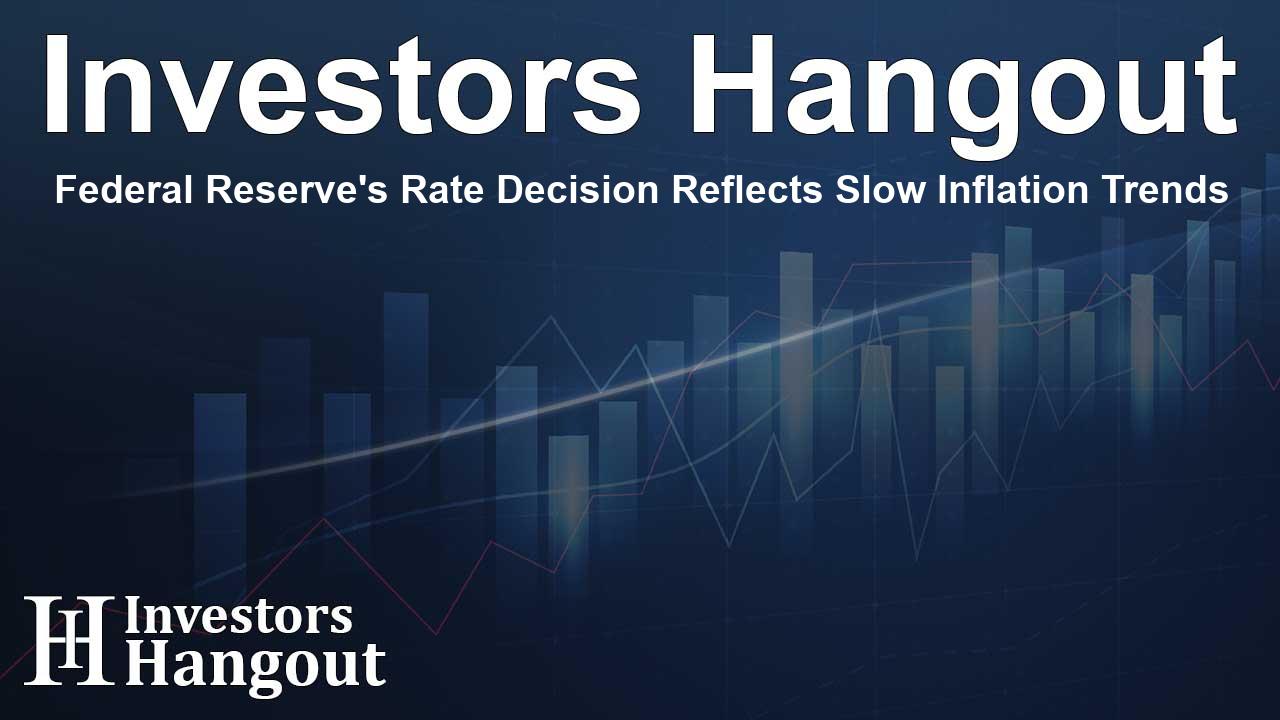Federal Reserve's Rate Decision Reflects Slow Inflation Trends

Understanding the Federal Reserve's Approach to Inflation
As the Federal Reserve prepares for its next meeting, fresh data on consumer prices plays a critical role in its decision-making process. A significant reading indicates the Fed is likely to cut interest rates by a quarter percentage point, leading to mixed reactions across Wall Street.
The Current State of Consumer Prices
The Consumer Price Index (CPI), a key metric for assessing inflation, showed a core increase of 3.2%. This figure matches expectations and maintains the same level observed in July. Notably, housing remains a significant contributor; the index for shelter rose 0.5%, highlighting the challenges in controlling inflation.
Annual Trends in Inflation
On a broader scale, the headline CPI rose by 2.5% compared to the previous year, signifying a slowdown from July's 2.9% annual increase. This represents the least inflationary growth since early 2021, suggesting a gradual easing in consumer price hikes.
The Impact on Stock Market Trends
Following the release of these inflation figures, stocks initially fell significantly but began to recover slightly as the market absorbed the information. Analysts expect the Federal Reserve to adopt a balanced approach, potentially allowing further adjustments later if the economic climate shifts.
Expert Insights on Future Rate Cuts
Economists, including LPL Financial's chief economist, have commented on the persistent inflation in services, indicating a likely 25 basis point cut in the Federal Reserve's upcoming meeting. Should job market conditions worsen, there may be room for more aggressive actions in the future.
Consumer Price Trends
Inflation rates have demonstrated a gradual decline since the second quarter of the year, with 3.2% recorded in both July and August, down from 3.6% in April. This continuous descent complicates the Fed's decision-making as it balances rate cuts against inflation control.
Fed Officials' Current Stance
Recent remarks from key Fed figures indicate a consensus on the need to adjust rates sooner rather than later. New York Fed president John Williams and Fed governor Chris Waller echoed this sentiment, suggesting that current market conditions warrant action.
The Broader Economic Picture
Fed Chair Jay Powell emphasized the dual focus of the Fed on job stability and inflation. He asserted that the labor market's health remains a priority as inflation trends show signs of cooling towards the targeted 2% rate.
Rate Cut Predictions and Economic Indicators
Following the CPI report, investor expectations surged for a 25 basis point rate cut, now at 85%, based on analyses from financial tools. The forthcoming meetings are critical as the Fed continues to navigate these economic indicators.
The Future of Interest Rates
Most analysts agree that the current job reports indicate a reluctance to implement a drastic 50 basis point cut. However, the revisions for job additions in July reveal a concerning trend; if the job market further weakens, larger cuts may be reconsidered.
Conclusion: A Focus on Labor and Inflation
In conclusion, while inflation appears to be stabilizing, the Federal Reserve remains cautious of the labor market’s trajectory. The path ahead seems to suggest a measured approach, with potential adjustments of 25 basis points in upcoming meetings as officials strive to maintain a balanced economy.
Frequently Asked Questions
What is the Federal Reserve's current stance on interest rates?
The Federal Reserve is likely to cut interest rates by a quarter percentage point based on recent consumer price data.
How have consumer prices changed recently?
The Consumer Price Index showed a core increase of 3.2%, indicating stability in inflation levels from July.
What factors are driving inflation currently?
Housing costs are significantly contributing to inflation, with the shelter index rising 0.5% recently.
How does the job market influence rate cuts?
The job market's stability is crucial; if conditions worsen, the Fed may consider more aggressive rate cuts in the future.
What is the inflation target for the Federal Reserve?
The Federal Reserve aims to maintain inflation around the 2% target for stable economic growth.
About Investors Hangout
Investors Hangout is a leading online stock forum for financial discussion and learning, offering a wide range of free tools and resources. It draws in traders of all levels, who exchange market knowledge, investigate trading tactics, and keep an eye on industry developments in real time. Featuring financial articles, stock message boards, quotes, charts, company profiles, and live news updates. Through cooperative learning and a wealth of informational resources, it helps users from novices creating their first portfolios to experts honing their techniques. Join Investors Hangout today: https://investorshangout.com/
Disclaimer: The content of this article is solely for general informational purposes only; it does not represent legal, financial, or investment advice. Investors Hangout does not offer financial advice; the author is not a licensed financial advisor. Consult a qualified advisor before making any financial or investment decisions based on this article. The author's interpretation of publicly available data shapes the opinions presented here; as a result, they should not be taken as advice to purchase, sell, or hold any securities mentioned or any other investments. The author does not guarantee the accuracy, completeness, or timeliness of any material, providing it "as is." Information and market conditions may change; past performance is not indicative of future outcomes. If any of the material offered here is inaccurate, please contact us for corrections.